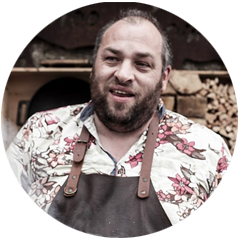Juicy & Perfectly Done: How to Rest Meat Properly
- 23 Sep 2021
- Home , BBQ , Meat , Chefs , Tips, Advice & Info , Marcus Bawdon , Low & Slow

The process of cooking meat is not complete once it’s off the heat. Understanding how to rest meat properly is key to getting it perfectly cooked and juicy.
We used our temperature knowledge to answer common questions about resting. We also asked Marcus Bawdon, blogger at CountryWoodSmoke and author of Food and Fire, how he likes to rest his beef to get the perfect finish.
meat Temperatures
Poultry: 74°C
Fish: 60°C
Beef, Lamb, Veal (Rare): 52°C
Beef, Lamb, Veal (Medium): 60°C
Beef, Lamb, Veal (Well Done): 71°C
Pork Roasts, Steaks & Chops (Medium): 63°C
Pork Roasts, Steaks & Chops (Well Done): 71°C
Sausages: 71°C
Load more
why rest meat?
Previous
Next
- Resting before you carve allows the cooking juices to be reabsorbed into the fibres of the meat. If you cut into it too soon, all of those precious flavoursome juices will be lost and your meat could end up dry.
How long to rest it for?
- The length of time you rest your meat is dependent upon its mass. Many chefs follow the rule of one minute resting time for every 100g of meat. We tend to rest smaller cuts such as steaks for around 5-10 minutes, medium-sized roasts such as beef topside for around 20 minutes, and large roasts like whole turkeys for between 30 minutes and one hour.
What about carryover cooking?
- Once you’ve removed your meat from the heat, it will continue to cook. The outside of your food cooks first because this is in direct contact with the heat, and is therefore hotter. The heat travels inwards through the process of convection, slowly cooking the centre (also known as the thermal centre) of your meat. As it rests, the heat retained in the outside of the meat will continue to raise the temperature of the thermal centre and therefore affect the level of doneness.
- If you would like your steak medium, you need it to reach a final done temperature of 60°C. If you take it off the heat at this temperature, the heat will continue to rise during the rest and it will then be a little more done than your liking once you cut into it. It is therefore recommended that you stop cooking your meat once the temperature is slightly under your desired final temperature.
How do I know when to take it off the heat?
- Predicting how much the heat will rise during carryover cooking takes some experience. In general, meats with a larger mass will have a greater rise in temperature. Therefore, the larger the meat, the earlier you need to take it off the heat.
- How you rest the meat also affects how much the temperature will rise. If you leave it uncovered and sitting on a cold surface, more heat will escape and it may not reach your desired temperature. If you rest the meat under a heat lamp or tightly wrapped in foil it may insulate the heat too well and cause it to become overdone. Wrapping can also steam the surface of the meat and cause it to become soggy. To preserve a crispy skin or crust, “tenting” with foil will retain some heat while allowing the air to circulate.
- To get a better idea of how much carryover cooking different cuts will need, try monitoring the temperature as they rest with a Thermapen or DOT Digital Oven Thermometer. This will enable you to see how quickly the heat continues to rise and where it begins to slow down and eventually starts to drop. Marcus Bawdon showed us how he likes to do this using the DOT. He grilled a beef topside on the BBQ, taking it off at 46°C to allow it to rise to 56°C for a medium rare finish. During the rest you can see how the temperature rises 10 degrees over 20 minutes due to carryover cooking.
Watch the video to see how he did it
Products to help you achieve perfection
Load more
"Since learning to cook to temperature using a Thermapen many years ago, having accuracy and control in my barbecuing has allowed me to explore my cooking creativity."










